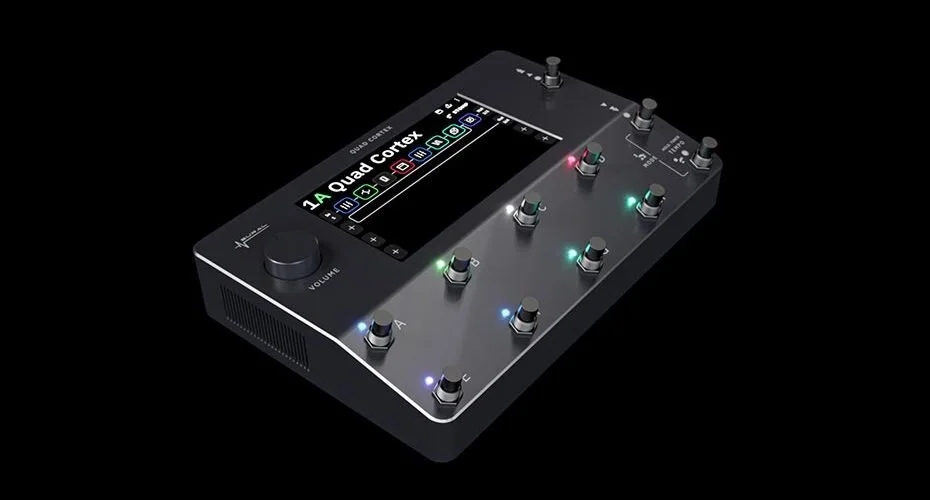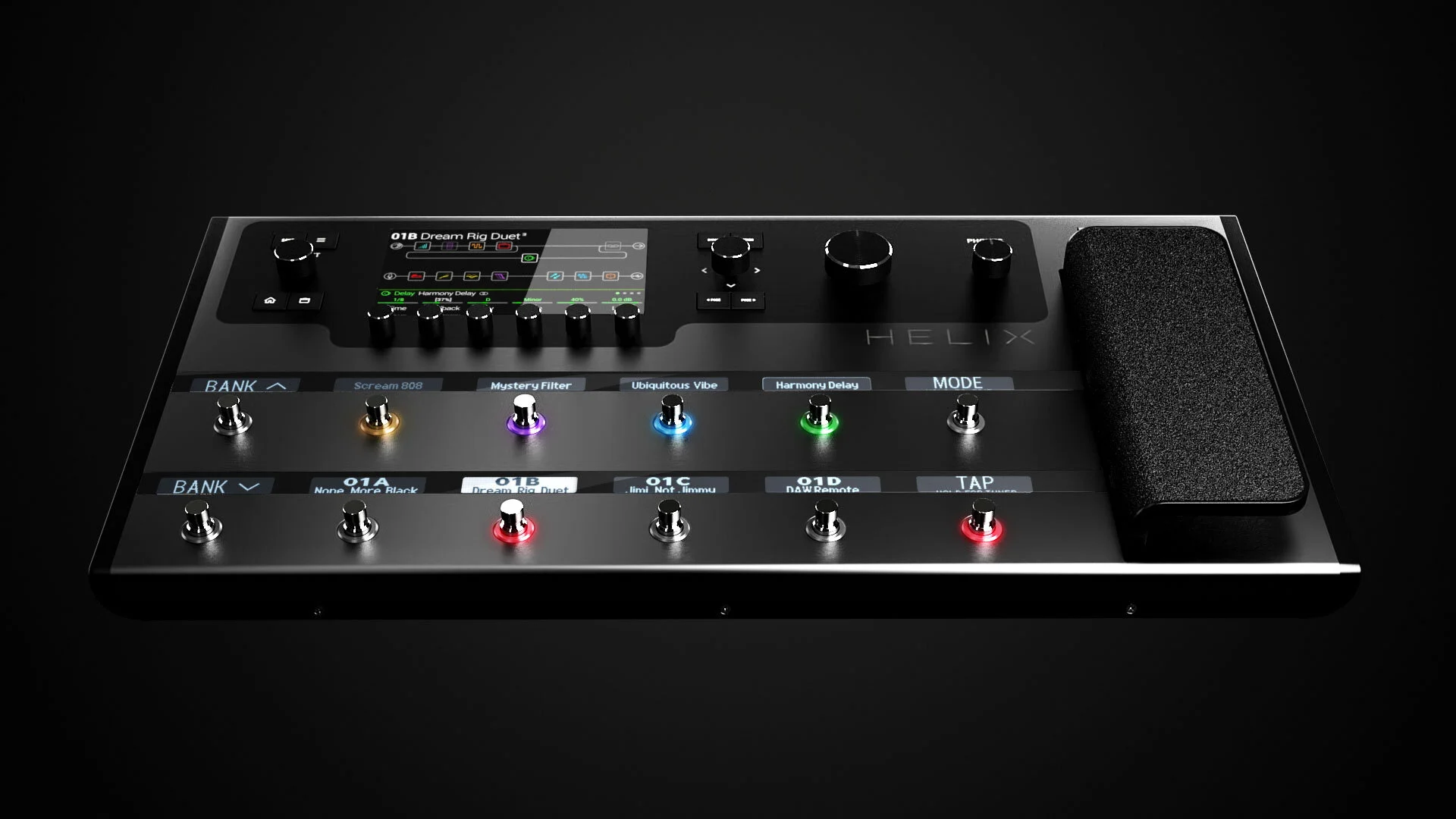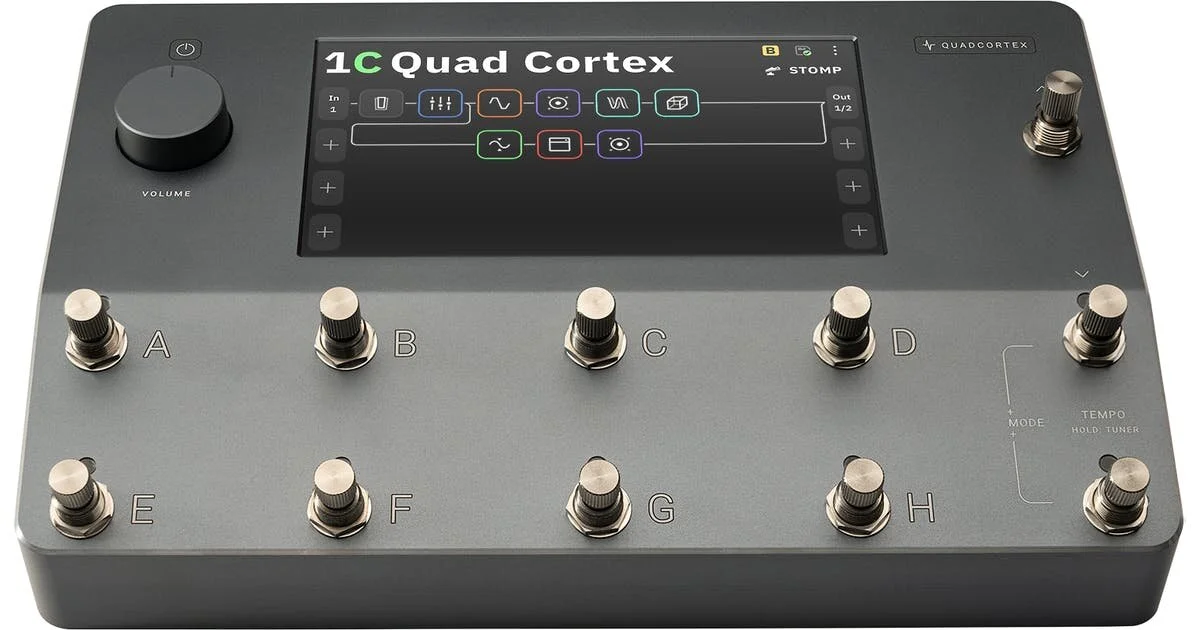Considering Amplifier Alternatives
Hello folks,
This time around, I want to talk a bit about amplifier alternatives, that is specifically, devices that negate the requirement for a traditional guitar amplifier by offering the ability to emulate amplifiers and cabinets using digital signal processor based hardware. There are more of these each day, but for the purpose of this article, I will stick to products that I know, because I have used my own money to purchase them and did not receive any special compensation to write this article, in keeping with my intent to have this place be a BS free zone.
My use cases are pretty straightforward. I play almost entirely for my own pleasure. I am no longer in a band, don’t play gigs, and do a lot of home recording both as a learning tool and also to preserve ideas and outcomes, that I may not remember in a week, let alone months or years. I am also a complete tone nerd, and like trying different settings and different “rigs” to see how things sound.
I’m also a bit less concerned with how bang on accurate an amp or cabinet simulation is, because I know enough about acoustics, that if you are not doing a side by side comparison of the real amp and the sim amp, through the same speaker system in the same room, and without any effects, any comparison in your mind is going to be highly subjective.
In the case of the three systems I own, I would say that they are all pretty decent, although I think that the more recent two do a better job of being closer to the mark. Also please be aware that I check the sound in three different ways. The first is via in ear monitors plugged directly into the device. The second is by connecting FRFR speakers to the device and listening to those. The third is by taking the outputs from the device and running them into a recording interface connected to the computer. The lion’s share of that work is done with UA Apollo Twin X interfaces, although I do have a Focusrite Solo that connects to a computer via USB. My laptops are all Thunderbolt 2 and my UA interfaces are all Thunderbolt 3 and so unless I can provide them AC power and use an adapter, connections are problematic. Plus if something happens to the Solo, I am out less than one tenth the cost of the UA interfaces. Think of the Solo has my fast hack or mobile interface. It’s actually quite good, but I am a sucker for UA plugins to my DAW and my DAW skills lie in Logic Pro X and UA Luna. Windows machines have Adobe Audition, which is not a bad tool, but it’s not where my skills lie and both Logic and Luna are Macintosh only offerings.
I am going to consider the following devices in this article.
Line 6 Helix
First is the Line 6 Helix, a substantial floor based interface that incorporates a ton of effects emulations, amplifier simulations and cabinet impulse responses. The beauty of the Helix is the ease of use in it’s interface. The design is superb, and the screen is nice and large. It is quite easy to program and sounds good in all three variants. It was my first device of the type and I still use it, more now for practice and initial writing than formal recording and I keep it in a different room in the house with a couple of guitars for quick mental health breaks or to capture ideas for a tone and store them. If I need to do a recording, the Solo and a Windows machine are handy. You can take a series of pedals, amps and cabinets and save them into easily accessed presets, so whether you are looking for a go to rig or set of rigs, access is easy and very flexible. Like the other devices, a wonderful thing about the Helix is that everything can be in one box, so if you are playing a gig where there is already a PA, you take your instrument, and your Helix and have the sound person connect it right to the PA. No microphone cables to trip over, no setting of mics in front of cabinets, less stage clutter, and the sound you expect coming out of the PA. And of course no hauling your expensive (and likely heavy) heads, cabinets or combos up and down stairs and through doorways that seem to want to smash your stuff. Less to load in, less to load out, consistent tone. Sounds good and it works.
Kemper Profiler Stage
My second purchase was a Kemper Stage. I looked at the original Kemper and while I thought it sounded brilliant, it felt to me more like a studio device than a player’s device. I think that the Kemper has the weakest user interface but it is quick to learn and easy to use. It also has tens of thousands of rigs, not just from Kemper, but from a very large and open community. Certainly you can pay for Kemper rig files if you wish, but thus far I have not done so. In the world of real amps, I have amps from Fender (Hot Rod Deluxe IVs, Twin Reverb, Bassman, Deluxe), Marshall (Super Lead Mark II, Silver Jubilee), Mesa (Boogie Mark V), VOX (AC30C2), PRS (Dallas), Blackstar (Club 40), Koch (Multitone), REVV (D20) and Victory (Viscount). The Kemper was my first experience seeking out amplifier simulations of amps that I own that did not have XLR outs to recording interfaces, or that might be simpler than miking up a cabinet and playing the amp in its sweet spot for recording purposes. The sweet spot of the old Super Lead Mark II is deafening in my recording space and while my home is detached and separated from my closest neighbour by at least forty feet, I try to be noise responsible. I have been extremely impressed by the rigs available for the Kemper system and it has allowed me to get very nice amp sims of amps that I do not have, cannot afford, or would have no place to put if I could afford them. I have found brilliant Two Rock rigs, a stunning Super Reverb, a Fender Dual Showman, a Mesa Rectifier as well as sims for some boutique amps. The Kemper has a somewhat initially steep learning curve but gets easier as you learn the thought process. The amp options are superb. Where the Kemper has and still does receive criticism is in its effects options. Kemper is working on this, with specific attention to overdrives and distortions. Their delay and modulation options are good, but not as extensive or device specific as you would find in a Helix for example. This is less an issue for me, because I am a happy pedal geek and have spent too much money over too long a time on pedals and have a raft of them. Raft, I said, whereas Josh Scott of JHS has a cruise liner of pedals. I’m a geek, but not yet nuts. I can put the pedals into the front end of the Kemper and if I wish, there is a very usable effects loop for delays, modulations and reverbs. Like the Helix, I can easily create my own rigs and presets in the Kemper, save them to the device, mark them as favourites and easily share them to the Kemper community. With the most recent firmware update, I can now control the Stage from an iPad using the device’s built in wireless. It can connect to your home wifi as well if your router has a WPS button. My WiFi is commercial grade mesh and I have not yet figured out if I can connect the Kemper to that network. The iPad interface is nice, but given the screen size of the iPad Pro, I think that the use of screen real estate can be improved. I’ve grown very accustomed to using the stomp switches and knobs on the Kemper stage and while the display is very small, and quite out of date, I get by fine without it. The device sounds terrific and is brilliant into FRFRs or the UA Apollos.
For the touring or gigging musician this is a great tool. It is well documented how Mark Knopfler used a Kemper for his most recent tour.
Neural Quad Cortex
This brings us to the third device, the Neural Quad Cortex. This took a long time to get from the time of order, COVID and development getting in the way. It’s beautifully designed, with a user interface as good as, if not a bit better, than the Helix, but with a range of amplifiers and cabinet simulations that is very rich, perhaps not (yet) as many as the Kemper, but I have successfully found options for everything that I need/want so far. The unit is compact and design allows for a really large, bright display. It connects to WiFi directly and you do not need a computer to do anything with it. Big bonus I say. Neural has been very aggressive in getting updates and enhancements out and I am very impressed that they are doing so much work to reduce load on the CPU cores, given how much available power that is in the unit. It would be easy to have services be loose and just eat CPU but the most recent update significantly reduced CPU utilization on processor intensive functions such as delay and reverb. I also like that they are adding more effect functionality as they go. It looks to be a very scalable platform in that regard. Outputs to FRFR sound great as does the sound to in ear monitors. I was initially disappointed by the sound in my Focal headphones, given how good they are with the Kemper, or even a cabinet emulator like a Torpedo Captor X (different thing, different article). Turns out the error was mine, not the device. Connection via XLR to the Apollo is straightforward and it is, like the Kemper, a great way to connect your instrument to your audio interface so you don’t have to do all the work in the DAW. I know that you can, but I personally like to get the sound right in the box, before I send to the DAW. UA has a number of great amp sims, and Two Notes have a ton of great cabinet sims, so that is always an option but I like the simplicity of doing it all in the Quad Cortex. The learning curve is less steep than on the Kemper, partly because of the IMO superior UI and that the stomp switches also double as rotating knobs to control settings. Like the Helix and the Kemper, the Quad Cortex is built for the working musician, it’s nice and tough. Where it excels beyond the Kemper, even at this early state is in the effects capability. There are more of them out of the box, and while the Kemper effects are awesome, it’s a bit easier to equate a Neural effect to something that you may own as a stomp or rack effect. Still though, for a pedal junkie like me, I can put my pedals in front of the interface or use the Effects loop for those effects that I like better in the loop such as delays, modulations and reverbs. The enormous processing power means that stacking effects is pretty easy as well.
Can I Actually Work Without a Real Amp?
There is something wonderful about a classic tube amp driven to its sweet spot. I have bought over the years so many amps because they all contribute something different to the sound. Every amp is unique in its own way, similar to how each great guitar has its own sound and feel. While I will happily admit that there is nothing like the feel of a stack with a Marshall slant front 1960A and its pair flat front being hit by a 100 watt head in its zone, the ability to play at that volume is increasingly limited. While I am not doing gigs at this juncture, my friends who do are encountering a lot more of the “turn it down, you’re too loud” orders. I wonder how Jimi, or Stevie or Eric Johnson would handle that. Guess that I am dating myself, but a large amp with acres of headroom pushed into its zone is absolute magic.
That said my body clock often wakes me between 2 and 4 am and I have learned that lying there trying to get back to sleep is a waste. I can plug into the Kemper or the Quad Cortex (location convenient) with a set of in ears and have a grand time without disturbing anyone while still getting that full tilt boogie sound in my ears. If I hit on something worth keeping, they are readily connected to the UA Apollo (cables are run and appropriately labelled, switching takes less than 30 seconds) and I am capturing into the DAW. Whether I end up keeping the work or trashing it is another day, but I find that I don’t miss out on as many ideas, and I can do a ton of tone sculpting in relative silence.
I can plug a Rickenbacker 325 into either unit and as I found excellent VOX AC30 rigs for each, can go full Beatles jangle and chime, easily and with a change to a Telecaster and a preset choice be in Zeppelin I territory. That’s an enormous benefit in my mind.
Conclusion
Will I be getting rid of my “real” amps? No, that’s unlikely and so long as I have the space and wherewithal to maintain them, I have no plans to do so. If dealing with volume is an issue, I have found the UA OX to be a great device between power amp and speaker cabinet, and when I just want to try different cabinets with a single head, the Two Notes Torpedo Capture X is a charm. As I said, I love classic tube amplifiers, so for me the amplifier alternatives are just that, alternatives, an and not an instead of. If you’ve never tried one of these critters, it’s in your interest to do so. You’ll need to find a proper guitar shop that lets you actually try stuff before you buy it. Take your own in ears, or set of headphones, as I think that your best experience will come from the unit itself, not coloured through a speaker cabinet or FRFRs that you are not familiar with.
Thanks for reading and until next time, peace.




